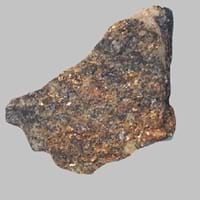Definition
Adakite is an intermediate to felsic volcanic rock that has geochemical characteristics of magma which is said to be formed by partial melting of altered basalt that is subducted below volcanic arcs
Slate is a fine-grained, foliated, homogeneous metamorphic rock derived from an original shale-type sedimentary rock composed of clay or volcanic ash through low-grade regional metamorphism
Origin
Adak, Aleutian Islands
England
Discoverer
Defant and Drummond
Unknown
Etymology
From Adak, Aleutian Islands
From Old French esclate, from esclat (French éclat)
Class
Igneous Rocks
Metamorphic Rocks
Sub-Class
Durable Rock, Medium Hardness Rock
Durable Rock, Medium Hardness Rock
Group
Volcanic
Not Applicable
Other Categories
Fine Grained Rock, Medium Grained Rock, Opaque Rock
Fine Grained Rock, Opaque Rock
Texture
Porphyritic
Foliated
Color
Black, Brown, Light to Dark Grey
Black, Brown, Buff, Green, Light to Dark Grey, Purple, Red, Shades of Blue
Durability
Durable
Durable
Appearance
Dull and Soft
Dull
Interior Uses
Decorative Aggregates, Floor Tiles, Homes, Hotels, Kitchens
Bathrooms, Decorative Aggregates, Entryways, Floor Tiles, Flooring, Homes, Hotels, Interior Decoration, Kitchens, Stair Treads
Exterior Uses
As Building Stone, As Facing Stone, Office Buildings
As Building Stone, As Facing Stone, Garden Decoration, Paving Stone
Other Architectural Uses
Whetstones
Curbing
Construction Industry
As Dimension Stone, Cobblestones, Rail Track Ballast, Roadstone
As Dimension Stone
Medical Industry
Not Yet Used
Not Yet Used
Antiquity Uses
Monuments, Sculpture, Small Figurines
Artifacts, Monuments, Sculpture, Small Figurines
Commercial Uses
Commemorative Tablets, Pottery, Used in aquariums
Blackboards, Commemorative Tablets, Laboratory bench tops, Standard material for the bed of Billiard table, Standard material for the beds of Pool and Snooker table, Tombstones, Used in aquariums, Writing Slates
Types
Not Available
Not Available
Features
Has High structural resistance against erosion and climate, Host rock for Diamond, Very fine grained rock
Easily splits into thin plates, Surfaces are often shiny, Very fine grained rock
Archaeological Significance
Famous Monuments
Data Not Available
Data Not Available
Famous Sculptures
Data Not Available
Data Not Available
Formation
Adakite rocks are formed when the hydrous fluids are released from minerals that break down in metamorphosed basalt, and rise into the mantle they initiate partial melting.
Slate is a low grade metamorphic rock that is generally formed by metamorphosis of mudstone or shale, under relatively low pressure and temperature conditions.
Mineral Content
Olivine, Plagioclase, Pyroxene
Apatite, Biotite, Chlorite, Feldspar, Graphite, Hematite, Kaolinite, Magnetite, Pyrite, Tourmaline, Zircon
Compound Content
Aluminium Oxide, MgO, Silicon Dioxide
Aluminium Oxide, CaO, Iron(III) Oxide, Potassium Oxide, MgO, Sodium Oxide, Silicon Dioxide, Titanium Dioxide
Types of Metamorphism
Cataclastic Metamorphism, Contact Metamorphism, Impact Metamorphism, Regional Metamorphism
Burial Metamorphism, Cataclastic Metamorphism, Regional Metamorphism
Types of Weathering
Chemical Weathering, Mechanical Weathering
Biological Weathering, Chemical Weathering, Mechanical Weathering
Types of Erosion
Coastal Erosion, Sea Erosion, Water Erosion
Coastal Erosion, Glacier Erosion, Water Erosion, Wind Erosion
Grain Size
Fine to Medium Grained
Very fine-grained
Fracture
Conchoidal
Splintery
Streak
Bluish Black
Light to dark brown
Porosity
Less Porous
Less Porous
Luster
Grainy, Pearly and Vitreous
Dull
Compressive Strength
Not Available
Cleavage
Not Available
Slaty
Toughness
Not Available
1.2
Specific Gravity
Not Available
2.65-2.8
Transparency
Opaque
Opaque
Density
Not Available
2.6-2.8 g/cm3
Specific Heat Capacity
Not Available
Resistance
Heat Resistant, Pressure Resistant, Wear Resistant
Heat Resistant, Impact Resistant, Pressure Resistant, Wear Resistant
Deposits in Eastern Continents
Asia
India, Russia
China, India, Turkey
Africa
Ethiopia, Somalia, South Africa
Not Yet Found
Europe
Iceland
Belgium, France, Germany, Italy, Norway, Portugal, Spain, United Kingdom
Others
Not Yet Found
Arctic
Deposits in Western Continents
North America
Canada, USA
USA
South America
Brazil
Brazil
Deposits in Oceania Continent
Australia
Not Yet Found
Not Yet Found
All about Adakite and Slate Properties
Know all about Adakite and Slate properties here. All properties of rocks are important as they define the type of rock and its application. Adakite belongs to Igneous Rocks while Slate belongs to Metamorphic Rocks.Texture of Adakite is Porphyritic whereas that of Slate is Foliated. Adakite appears Dull and Soft and Slate appears Dull. The luster of Adakite is grainy, pearly and vitreous while that of Slate is dull. Adakite is available in black, brown, light to dark grey colors whereas Slate is available in black, brown, buff, green, light to dark grey, purple, red, shades of blue colors. The commercial uses of Adakite are commemorative tablets, pottery, used in aquariums and that of Slate are blackboards, commemorative tablets, laboratory bench tops, standard material for the bed of billiard table, standard material for the beds of pool and snooker table, tombstones, used in aquariums, writing slates.










